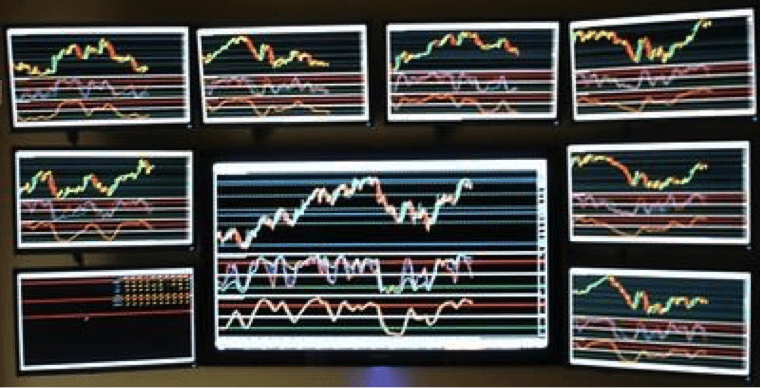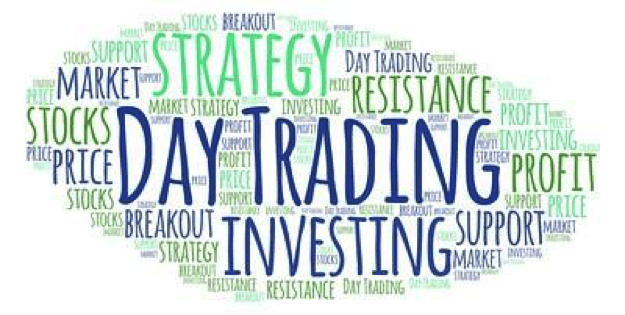The forex trading market is the largest trading market in the entire world. It’s worth trillions of dollars, significantly more than the stock market. Moreover, it’s open 24/7 for about 5 days a week. So, forex traders have a lot of opportunities to invest in currency trading pairs.

Also Read: 10 Traits on How to be a Successful Trader
Contents
- Trading Strategies
- Swing Traders: Scalpers, Day Traders, Position Traders
- Scalpers (a.k.a. Noise Traders)
- Day Traders/Intraday Traders
- Position Traders
- Long-Term Investors
- Conclusion
Trading Strategies
There are 2 categories of traders: swing traders and long-term traders. Swing traders will trade their assets when the market gathers or loses momentum. Their profit is based on short-term price differences between their entry and exit points. The long-term investors just buy and hold their assets for periods of a year or more.
Swing Traders: Scalpers, Day Traders, Position Traders

Swing traders are divided into 3 types of traders. The three types are scalpers, day traders, and position traders. Each type is defined by how often they trade at least 90% of their account’s capital. The definition of each trader type is set by FINRA. FINRA distinguishes between traders who trade several times per day, multiple times per week, every few weeks to a couple of months, over a period of several months, and for over a year.
Scalpers (a.k.a. Noise Traders)

Scalpers are people whose trades are made within seconds to hours. The short-term trades are made based on differences in price. Their goal is to make a lot of short-term traders with small profits that grow into substantial profit over time.
These traders try to quickly identify patterns in the market data and exploit them. Often they will study 5, 15, 30, and 60 minute market charts to get a feel for the market and the price direction of the assets of interest to you.
This is a time-consuming, energy draining activity that requires traders to act quickly and make assumptions about market movements and the longevity of the market trends. Since they cannot watch the trends for a lengthy period of time, they must combine their instinct, chart reading skills, and luck to get the most from their short-term investments. Over time, these traders’ goal is to have their profits be significantly greater than their losses.
Scalpers do not hold their positions overnight or through the weekend. Since their positions are closed by the end of the trading day, their positions in the market are not affected by events that happen overnight and during the weekend.
A major concern with this trading strategy is the cost of trading related fees. Since scalpers make a lot of short-term trades, they will pay higher trading fees than other traders and any other fees associated with frequent trading.
Day Traders/Intraday Traders

Day traders trade their assets over a period of hours, but close almost all of their positions by the end of the day. The longer trading period gives them a chance to find better entry and exit market points.
While day traders can take advantage of greater price differences, they must still find the optimal times to and exit the market. To do this, they use 60-minute charts and charts that span hours. Their trading is not as hectic, frenzied and stressful as the scalpers’ trading strategy.
In addition, they are not required to spend as much time staring at market charts and making trades. Their short-term trades must still be timed well so that they can make a profit. This means that they can spread their trades throughout the day. Also, they can be a bit more relaxed about when they trade, as long as they don’t lose money during the trade, and it covers their trade-related fees.
Since they do leave a few positions open overnight and/or through the weekend, they are exposed to market surprises that may affect asset prices. The events that can affect asset prices are wars, natural disasters, corporate mergers, economic sanctions or sudden economic downturns.
Like scalpers, they pay higher commission fees than traders who trade over a longer period of time. The issue here is that the profits from the day trades should cover the trader’s market losses and any trade-related fees.
Also Read: Day Trading Computer Set Up
Position Traders

Position traders trade assets over a period of time that can be as short as a day to as long as several weeks. They plan to trade the asset at a set point in the market that they expect will occur during the period of time that they have allotted for the trade.
Since the trader has an extended period of time to make the trade, there is less stress and much less time spent studying market charts. For example, the trader may study market charts that cover 2-, 4-, 6-hour time periods. If the trader can find a market trend that is gaining momentum over time, the best entry and exit positions can be decided, and the trader can just focus on the price points of interest.
This type of trading carries different risks than those faced by the scalpers and day traders. Their risk comes from holding their position from a day to several weeks. During that time period, traders know that the value of the asset will fluctuate. Their willingness to hold the asset until it reaches the trader’s (targeted) price point, or a better one.
These traders can have their asset prices affected by events and news that affect the asset’s price. These events may not affect the trader’s plans for the asset, but they could also trigger some price changes that motivate the trader to sell the asset before it reaches a profitable price point.
The other risk is that the expected price point may not be reached in the market. If this happens, the trader may regret not taking advantage of earlier changes in the market that would have been in their best interest but not as profitable as the expected/desired price point. Ultimately, these traders are waiting for a day that may never come, but they hope it comes so that they can get their planned return on investment.
Long-Term Investors

Long-Term investors (LTIs) don’t care about the short-term price fluctuations of an asset. They want to own the asset for an extended period of time. They may sell it in less than a year or just not hold it for a long time because there have been some changes in the market or at the company that affect its potential performance and/or profitability.
Unlike scalpers, day traders, and position traders, LTIs focus solely on financial analysis. To them, it is more important to look at a company’s management, financials, industry, and competitors than its historical market performance.
For the LTIs, the biggest risks are when to buy and when to sell the asset. Since they buy and hold the asset, the charts may review daily market charts and those covering weeks or months. The bulk of their time is spent finding assets that they may be interested in purchasing and performing an in-depth financial analysis on the assets of interest.
Conclusion
Technical analysis tools are preferred by many traders because they are events driven traders. An event driven trader is a momentum trader who likes to trade frequently and exploit price swings.
New traders, especially younger ones, are likely to be swing traders. As they become more familiar with fundamental analysis and develop an understanding of how fundamental factors affect an asset's market performance, they are more likely to make longer-term investments.















